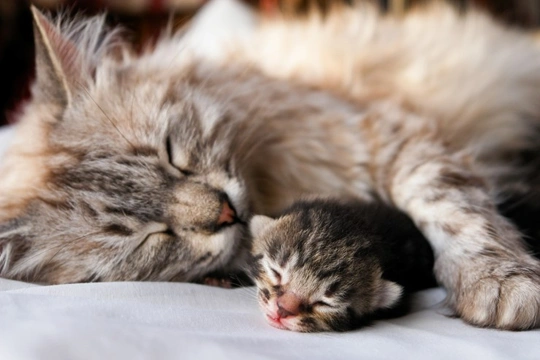
When do cats come into heat? Do cats have a breeding season?
If you intend to breed from your cat or have a cat that hasn’t been spayed or neutered, it is important to understand cat heat cycles, and when and why your cat might be receptive to mating.
Unless you own a good quality pedigree cat that you intend to use within a planned breeding program, the sensible and responsible move to make is to have your cat neutered. However, if you do want to breed from your female cat or cannot have them neutered for other reasons, you will need to manage their heat cycles and mating instincts.
Caring for and managing a cat that hasn’t been neutered – whether they are male or female – needs to be tackled carefully, in order to ensure that you don’t end up with a surprise litter of kittens, or hear the news that your male cat has been roaming around the neighbourhood fighting and looking for a mate.
In this article we will look at when cats come into heat, whether there is a fixed breeding season for cats, and when cats are most likely to be receptive to mating. Read on to learn more.
When do cats first come into heat?
Female cats often undergo their first heat cycle quite early, often around the age of about six months, although this can occur as early as four or five months in some cases. Almost all unneutered female cats will have had their first heat cycle by the time they reach their first birthday, unless there is a medical issue that prevents this from happening.
Is there a set frequency at which cats come into heat?
Cats don’t follow a set regular biological rhythm when it comes to when they come into heat. Female cats are very fertile – while the old joke about rabbits breeding continually is very well known, cats aren’t actually far behind in the sex drive stakes, and a heat cycle in the female cat can even be triggered by spending time within scenting distance of a fertile male.
The cat’s heat cycle lasts anywhere between around five and ten days, and cats can come into heat as often as every three or four weeks.
If a cat mates and conceives during a heat cycle, the cat won’t go through any further heat cycles until her kittens have been born and usually, are several weeks old and beginning to wean. The whole process starts up again within a couple of months of delivering a litter, although in occasional unusual cases, a nursing queen may come into heat again within just a couple of weeks of birthing a litter.
Do cats have a breeding season?
Because cats are highly fertile and can come into heat every month or so, there is no real set breeding season for cats. This is particularly true for our domestic pet cats, because their lifestyles and continual access to resources and a stable warm temperature year-round negates the effects of seasonal fertility cycles. Some animals have distinct seasonal breeding cycles, which help to ensure that their offspring has the best possible chances of surviving.
Breeding seasons usually result in the animal in question coming into heat any time between the beginning of spring to mid-autumn, which means that their young will in their turn be born during the milder months of the year.
The better weather and more readily available resources like food that can be found in nature during the milder months of the year helps to give the animal’s offspring the best start to life, and ensure that their mother can keep them warm enough and get enough food to support nursing and wean their young at the appropriate time.
Are there certain times of the year when cats are more likely to be in heat?
As we’ve mentioned, cats that are unspayed come into heat very regularly, little affected by the vagaries of the seasons and the weather. Unlike many animals, cats don’t stop being fertile or apt to undergo heat cycles in the colder months of the year – but they are more likely to come into heat and be receptive to mating in the spring and summer.
This is because cats are still sensitive to seasonal variations that occur in nature and this has a direct impact on their hormone levels and fertility – and you may find that during the winter, your unspayed female cat will be less likely to come into heat regularly, or even stop undergoing heat cycles until the early spring unless they are triggered by the presence of a male.
However, there is no safe time for unspayed female cats in which you can be totally sure that they won’t come into heat and so, be able to mate and breed – and so if you own an unspayed female cat, you will have to be very careful about managing them to prevent them from coming into contact with entire males and breeding when you don’t want them to.



